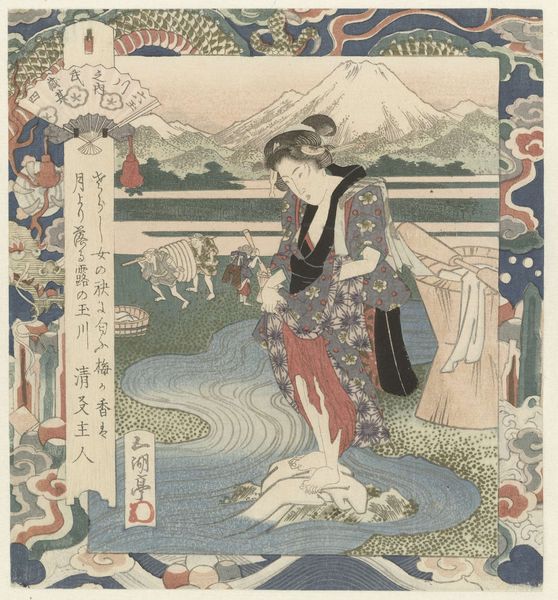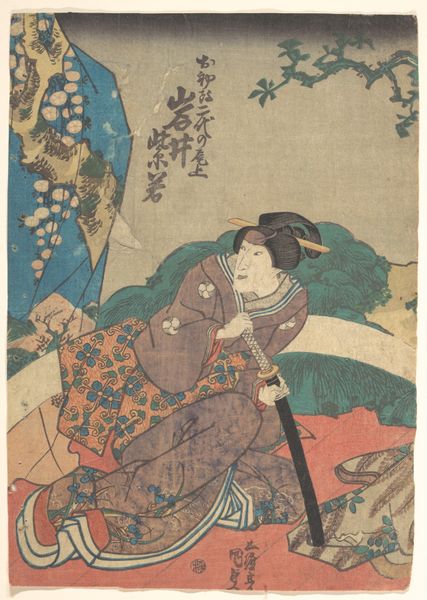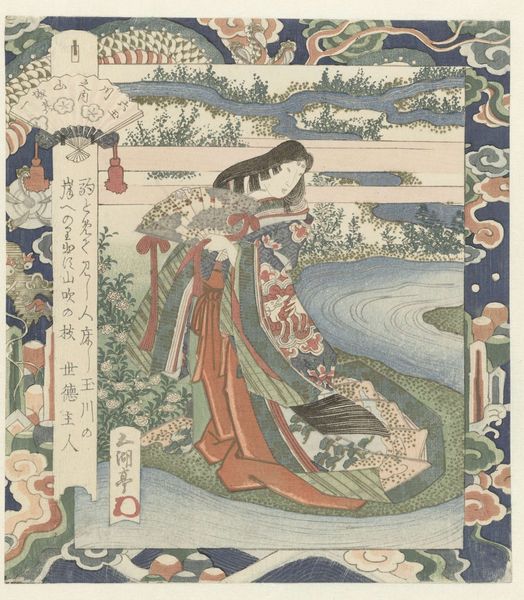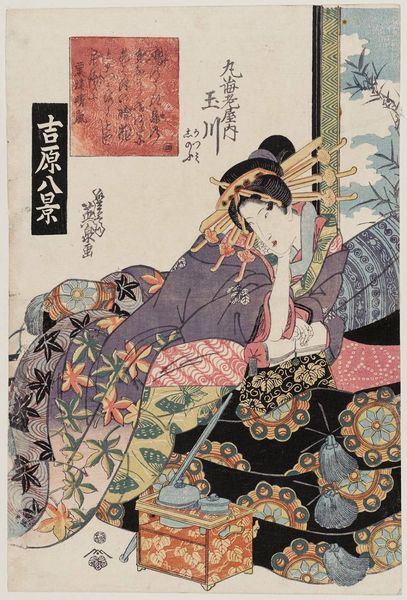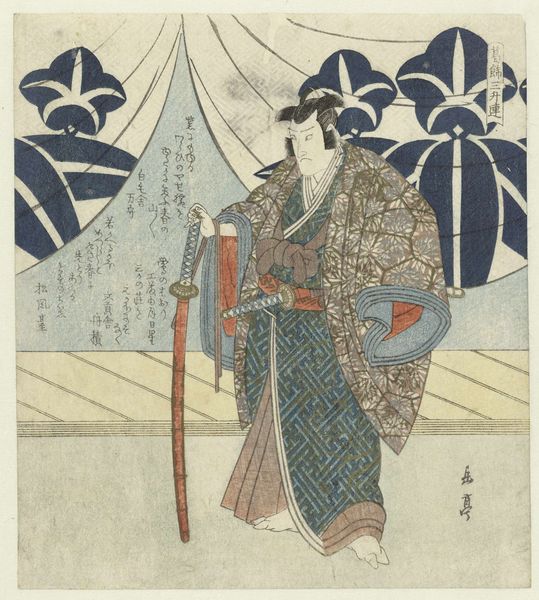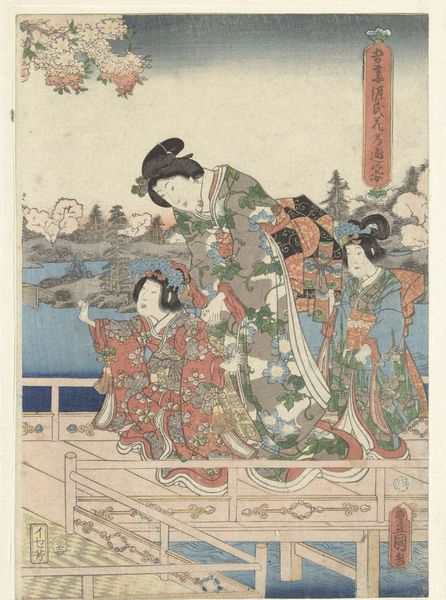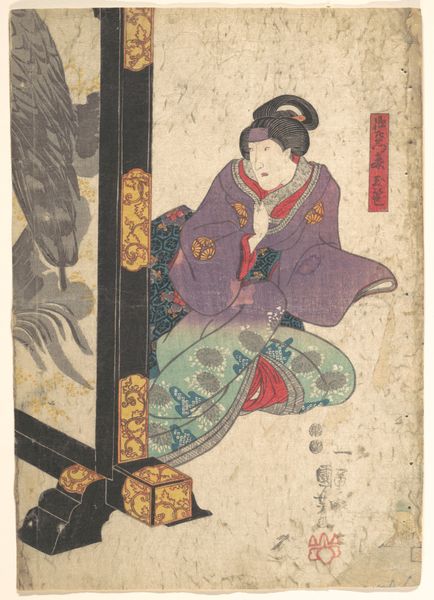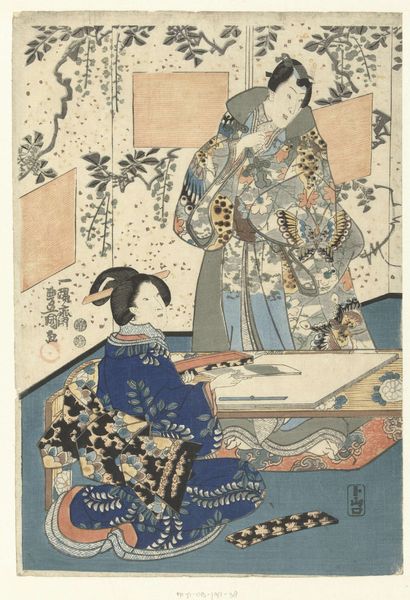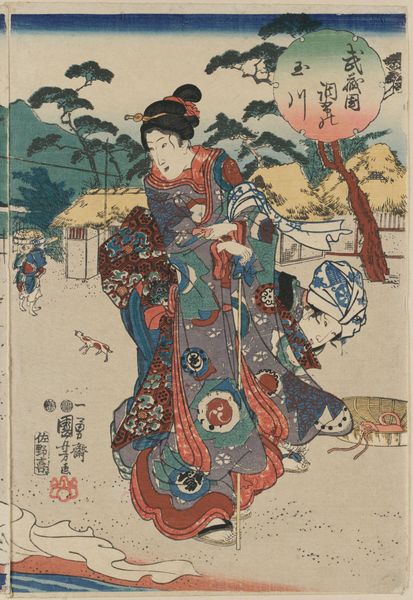
print, woodblock-print
#
portrait
# print
#
asian-art
#
landscape
#
ukiyo-e
#
figuration
#
woodblock-print
Dimensions: height 201 mm, width 184 mm
Copyright: Rijks Museum: Open Domain
Editor: So here we have "Woman on a Cliff," a woodblock print made around 1832 by Utagawa Sadakage. The color palette is so soft, almost muted, yet the composition is incredibly layered. What strikes you most about this piece? Curator: Ah, yes! Isn't it lovely? To me, it whispers stories of fleeting beauty. I get completely lost in the patterned kimono. And then, my gaze wanders up into the distance with those whimsical clouds. This print has a touch of theatricality, wouldn't you agree? That carefully constructed scene in the background, almost like a stage set. Do you get that sense? Editor: I do! Like she's caught between two worlds – the foreground being a more tangible reality, while the background feels more like a dream. Is that framing common in ukiyo-e? Curator: You know, Utagawa and his contemporaries played quite a bit with the idea of perspective. While not always as dramatically framed as this, that sense of layers, the interweaving of foreground and a stylized distant view, yes, it is one of Utagawa's hallmarks. Also, this piece shares many artistic features with other contemporary prints of stage actresses portraying iconic roles. I find that truly spectacular! It reminds us that art often holds up a mirror – not just to nature, but to the human drama unfolding within. What new perspectives do you get by making that comparison? Editor: That's such a wonderful way to view it. So, it becomes a portrait not just of a woman, but of a role, a performance, filtered through the artist’s unique lens! Curator: Precisely! It's that double layer, that mirroring, that keeps me coming back. Editor: Thank you. I feel like I'm seeing so much more depth than I did before. Curator: My pleasure entirely! These old prints still have the capacity to ignite our creativity. What a wonder that even after so many centuries, new interpretations are born every single time.
Comments
No comments
Be the first to comment and join the conversation on the ultimate creative platform.
